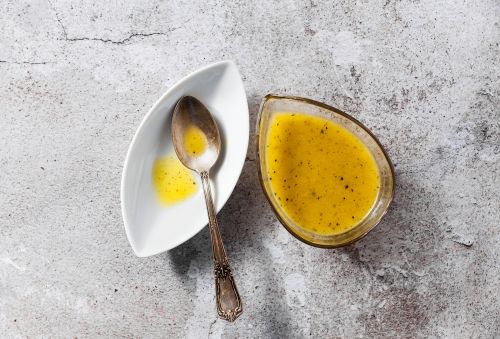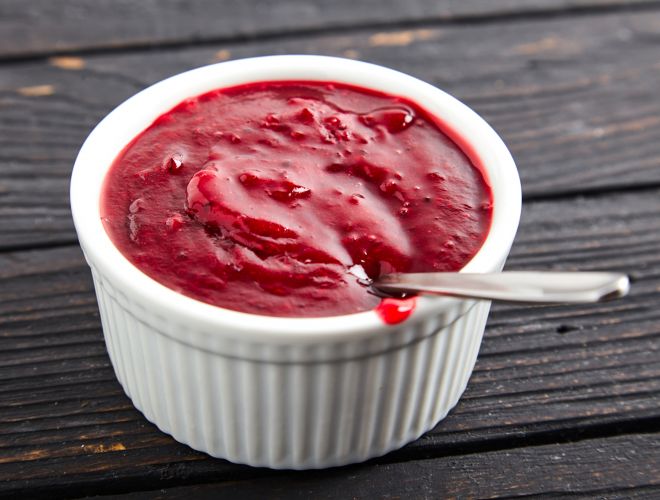ORGANIC Mustard oil
virgin


German agriculture
- cold-pressed and virgin
- from organic mustard seeds low in erucic acid
- high content of omega-3 fatty acids (14 g per 100 g)
- High content of unsaturated fatty acids
- piquant taste
from 1883 ratings


 The mustard plant flowers in bright yellow.
The mustard plant flowers in bright yellow.Like rapeseed, mustard (Sinapis alba) belongs botanically to the cruciferous family. The rapeseed and mustard plants are also visually similar with their yellow flowers. In addition to the well-known edible mustard, a valuable oil with a spicy heat can also be pressed from the mustard seed - a culinary rarity that is very popular in Indian cuisine, but is also ideal for preparing salads and meat and fish dishes in this country.
Mustard oil contains around 14 g per 100 g of omega-3 fatty acids, which is more than in rapeseed or walnut oil, which are also considered good sources of omega-3. Mustard oil also has a balanced ratio of omega-3 to omega-6 fatty acids. These properties make mustard oil a high-quality and recommendable edible oil.
 Excellent
Excellent
Our organic mustard oil is "Culinary Ambassador 2019". The expert jury from Hanover selected their favorites from exceptional products that are produced in regions of Lower Saxony by companies with a transparent company history and awarded our mustard oil the "Culinary Ambassador of Lower Saxony" label of excellence in June 2019.
Safe to enjoy thanks to new varieties
Mustard seeds come in different varieties. There are yellow, brown and black mustard seeds. They differ only slightly in shape and color, but have different properties and ingredients. Although mustard oil has a balanced ratio of omega-3 and omega-6 fatty acids, the seed's erucic acid content is crucial for the production of edible oil. This monounsaturated fatty acid is problematic from a nutritional point of view, as it can lead to pathological changes in the heart muscle, fatty degeneration of the heart and cause growth retardation if consumed in excess.
Ölmühle Solling's organic mustard oil is cold-pressed exclusively from freshly milled yellow mustard seeds of the Martigena variety. This mustard seed is suitable for the production of a safe edible oil and has an extremely low erucic acid content. Thanks to the breeding of new varieties, we now have mustard seeds that have a very low erucic acid content of less than 1% and are therefore suitable for the production of high-quality edible oil. One of these varieties is the yellow mustard variety Martigena. Our valuable mustard oil is therefore safe to consume. Of course, cultivars should not be confused with genetically modified organisms.
Mustard oil in the kitchen
The mustard oil from Ölmühle Solling is characterized by the typical mustard pungency that is also known from horseradish, wasabi, rocket, radish and cress. The mild pungency is due to the natural content of mustard oil glycosides and the isothiocyanates (allyl mustard oil) released from them. Mustard oil enhances fish and meat dishes as well as salad dressings, dips and vegetable dishes and is also popular in Indian cuisine. We also recommend it for preparing potato salad.
Usage
Mustard oil is very popular in Indian and Bengali cuisine. It gives curries and fish dishes, for example, a spicy, piquant aroma. Mustard oil is also highly recommended as a sushi seasoning oil as an alternative to green wasabi paste.
Mustard oil is also ideal in traditional German cuisine, for example as a spicy dip with sour cream, sour cream and mustard oil, or mixed with rapeseed oil in homemade mayonnaise for hearty salads. A tablespoon of mustard oil transforms jam into a particularly tasty accompaniment to cheese.
Mustard oil is also popular for cooking, seasoning and marinating vegetables, for example hot leeks.
Recipe

Orange-honey mustard
Recipe for orange-honey mustard. Fruity combination with mustard for grilled meat or fish or as topping for cheese delicacies. zum Rezept
Hazelnut mustard crust
Hazelnut mustard crust is ideal to take meat, fish or vegetables dishes to another level. Mustard spice oil creates an extraordinary oriental taste. zum Rezept
Raspberry mustard sauce
Recipe for piquant-fruity raspberry mustard dressing with mustard oil, raspberry vinegar, white wine and honey. Goes well with cheese, salads, grilled meat and vegetables. zum Rezeptweitere Rezepte
Ratings
Specification and ingredients
Mustard oil
Average energy and nutrient content for 100 g
Please enjoy our products as part of a diverse and balanced nutrition.
As a product of nature the composition of the oil can vary, the given specifications are therefore average values.
Ingredients
Mustard oil*, essential mustard oilDurability
9 - 12 monthsLagerung
Store in a cool and dark place.Fatty acids diagram






 Chili spice oil
Chili spice oil Safflower oil
Safflower oil Wheat germ oil
Wheat germ oil